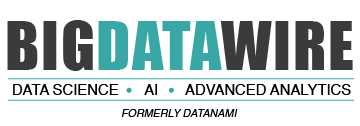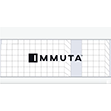

(VectorMine/Shutterstock)
We’re well into big data’s second decade, and we’ve made a ton of progress on many fronts. We have cloud-based systems with infinite storage capacity, sophisticated machine learning software that improves by the month, and powerful clusters turbo-charged with GPUs. Increasingly, what differentiates big data outcomes is the quantity and quality of the data we use, which typically means going offsite for additional sources. So why does buying and selling data have to be so hard?
That’s the question that Narrative founder and CEO Nick Jordan found himself asking after going through the rigmarole of the data buying process with a company that bought and sold millions of dollars’ worth of data every year.
“I actually looked for a solution to my problem, because it was a giant pain in the ass on both sides, frankly,” Jordan says. “What I found at the time was a bunch of data brokers, a bunch of people who would sit between buyers and sellers and say ‘Don’t worry, well make it easy.’”
But instead of improving life for buyers and sellers of data, these data brokers mostly were out for themselves, Jordan says. The brokers marked up the cost of data, created opacity between the buy and sell sides, and generally did their best to put themselves in the driver’s seat as the digital middlemen – to the detriment of the actual buyers and the sellers.
“When somebody can basically sit in the middle and say, hey this stuff is so hard, we can make a business entirely out of almost arbitraging the underlying asset–to me, that just shows what an immature and inefficient market it was,” Jordan says.
It also presented a business opportunity, which Jordan is hoping to fill with Narrative, the data streaming platform that he founded five years ago. Like the data brokers, Narrative sits between the buyers and the sellers of data. But unlike typical data brokers, Narrative’s goal is to build transparency, automation, and trust on both sides of the data equation.
“The idea is to build a system that takes all the manual and inefficient bits of buying and selling data and make them more efficient through automation, standardization, and normalization,” Jordan says.
Narrative’s SaaS-based application provides a platform to connect buyers and sellers. On the buy side, it helps companies acquire and integrate second- and third-party data, typically for the purpose of AI or analytics. On the sell side, companies that license Narrative’s software have a mechanism for reaching multiple buyers in an orderly and streamlined fashion.
There’s a lot of work that goes into buying and using, on both sides of the equation, according to Jordan. There are all the usual questions about the format that the data takes (CSV, Parquet, JSON, etc.), the units of measurement (Imperial or metric, GPS or UTM) and the frequency at which it will be refreshed (monthly, daily, hourly, etc.).
Once data scientists or analysts have studied a sample of the outside data and decided that it will work for their particular activity, then data engineers are called in to build the ETL pipelines to move the data, which can often take months.
On top of the logistical questions, there are legalities that must be taken into account. Buyers and sellers both must take measures to assure that they’re not violating regulations for their particular geography. Finance teams typically gets involved to obtain usage data and make the payments. And if anything changes to the data or the contract, all the engineers, analysts, data scientists, lawyers, and finance folks get to drop whatever they’re doing and revisit the matter.
Anybody who says that buying data is easy “are clearly people who have never bought data,” Jordan says. “It takes a village to buy data, so the goal is to give tools to all of those personas to make all of their jobs easier, so it’s not the cluster that it is today.”
Companies that buy data through Narrative can build data pipelines that combine datasets from multiple sources into a single, unique stream of data, which can be pushed to a data lake, data warehouse, or specific application. The company has a range of sellers on its platform today, offering many types of consumer data, including demographic data, geo-location data, behavioral data, and device data, among others.
The New York City-based company is an AWS shop, and leverages a host of big data technologies, including Kinesis, Dynamo, and Spark, to facilitate the movement of large amounts of data. Besides the big data tech, the real advantage of Narrative is the taming of all the other questions, including the management of the relationship with data providers.
One Narrative customer is a hotel chain that needs to know the wine preferences of its clients, so that they can find their preferred variety waiting when they get to their room, Jordan says. The company currently has around 40 data partners selling data, and many more clients buying data, in some cases into the millions of dollars.
Narrative recently added the credit bureau TransUnion to the sell-side of the equation. TransUnion has a long history of providing high-quality data about nearly every American consumer, and that data is now on tap in the Narrative platform, which is targeted at Fortune 2000 firms.
Narrative, of course, isn’t the only company striving to simplify the data buying and selling process. Data marketplaces are popping up all over the place, which is a good thing. The more standardization that comes to this market, the better off we will all be.
Related Items:
Easy Money? Considerations for Building Out Your Data Monetization Practice
Selling Your Data? Here’s What You Need To Know
Five Ways CDOs Turn Data into Dollars
July 1, 2025
- Nexdata Presents Real-World Scalable AI Training Data Solutions at CVPR 2025
- IBM and DBmaestro Expand Partnership to Deliver Enterprise-Grade Database DevOps and Observability
- John Snow Labs Debuts Martlet.ai to Advance Compliance and Efficiency in HCC Coding
- HighByte Releases Industrial MCP Server for Agentic AI
- Qlik Releases Trust Score for AI in Qlik Talend Cloud
- Dresner Advisory Publishes 2025 Wisdom of Crowds Enterprise Performance Management Market Study
- Precisely Accelerates Location-Aware AI with Model Context Protocol
- MongoDB Announces Commitment to Achieve FedRAMP High and Impact Level 5 Authorizations
June 30, 2025
- Campfire Raises $35 Million Series A Led by Accel to Build the Next-Generation AI-Driven ERP
- Intel Xeon 6 Slashes Power Consumption for Nokia Core Network Customers
- Equal Opportunity Ventures Leads Investment in Manta AI to Redefine the Future of Data Science
- Tracer Protect for ChatGPT to Combat Rising Enterprise Brand Threats from AI Chatbots
June 27, 2025
- EarthDaily Ignites a New Era in Earth Observation with Landmark Satellite Launch
- Domo Deepens Collaboration with Snowflake to Accelerate AI-Driven Analytics and Data Integration on the AI Data Cloud
- AIwire Launches Annual People to Watch Program
June 26, 2025
- Thomson Reuters: Firms with AI Strategies Twice as Likely to See AI-driven Revenue Growth
- DataBahn Raises $17M Series A to Advance AI-Native Data Pipeline Platform
- BCG Report: Companies Must Go Beyond AI Adoption to Realize Its Full Potential
- H2O.ai Breaks New World Record for Most Accurate Agentic AI for Generalized Assistants
- Foresight Raises $5.5M Seed Round to Bring Unified Data and AI to the Private Market
- Inside the Chargeback System That Made Harvard’s Storage Sustainable
- What Are Reasoning Models and Why You Should Care
- Databricks Takes Top Spot in Gartner DSML Platform Report
- Snowflake Widens Analytics and AI Reach at Summit 25
- Why Snowflake Bought Crunchy Data
- LinkedIn Introduces Northguard, Its Replacement for Kafka
- Change to Apache Iceberg Could Streamline Queries, Open Data
- Agentic AI Orchestration Layer Should be Independent, Dataiku CEO Says
- Top-Down or Bottom-Up Data Model Design: Which is Best?
- The Evolution of Time-Series Models: AI Leading a New Forecasting Era
- More Features…
- Mathematica Helps Crack Zodiac Killer’s Code
- AI Agents To Drive Scientific Discovery Within a Year, Altman Predicts
- ‘The Relational Model Always Wins,’ RelationalAI CEO Says
- Confluent Says ‘Au Revoir’ to Zookeeper with Launch of Confluent Platform 8.0
- Solidigm Celebrates World’s Largest SSD with ‘122 Day’
- DuckLake Makes a Splash in the Lakehouse Stack – But Can It Break Through?
- The Top Five Data Labeling Firms According to Everest Group
- Supabase’s $200M Raise Signals Big Ambitions
- Data Prep Still Dominates Data Scientists’ Time, Survey Finds
- Toloka Expands Data Labeling Service
- More News In Brief…
- Astronomer Unveils New Capabilities in Astro to Streamline Enterprise Data Orchestration
- Databricks Unveils Databricks One: A New Way to Bring AI to Every Corner of the Business
- BigID Reports Majority of Enterprises Lack AI Risk Visibility in 2025
- Snowflake Openflow Unlocks Full Data Interoperability, Accelerating Data Movement for AI Innovation
- Astronomer Introduces Astro Observe to Provide Unified Full-Stack Data Orchestration and Observability
- Seagate Unveils IronWolf Pro 24TB Hard Drive for SMBs and Enterprises
- Gartner Predicts 40% of Generative AI Solutions Will Be Multimodal By 2027
- Databricks Donates Declarative Pipelines to Apache Spark Open Source Project
- Code.org, in Partnership with Amazon, Launches New AI Curriculum for Grades 8-12
- BigBear.ai And Palantir Announce Strategic Partnership
- More This Just In…





























